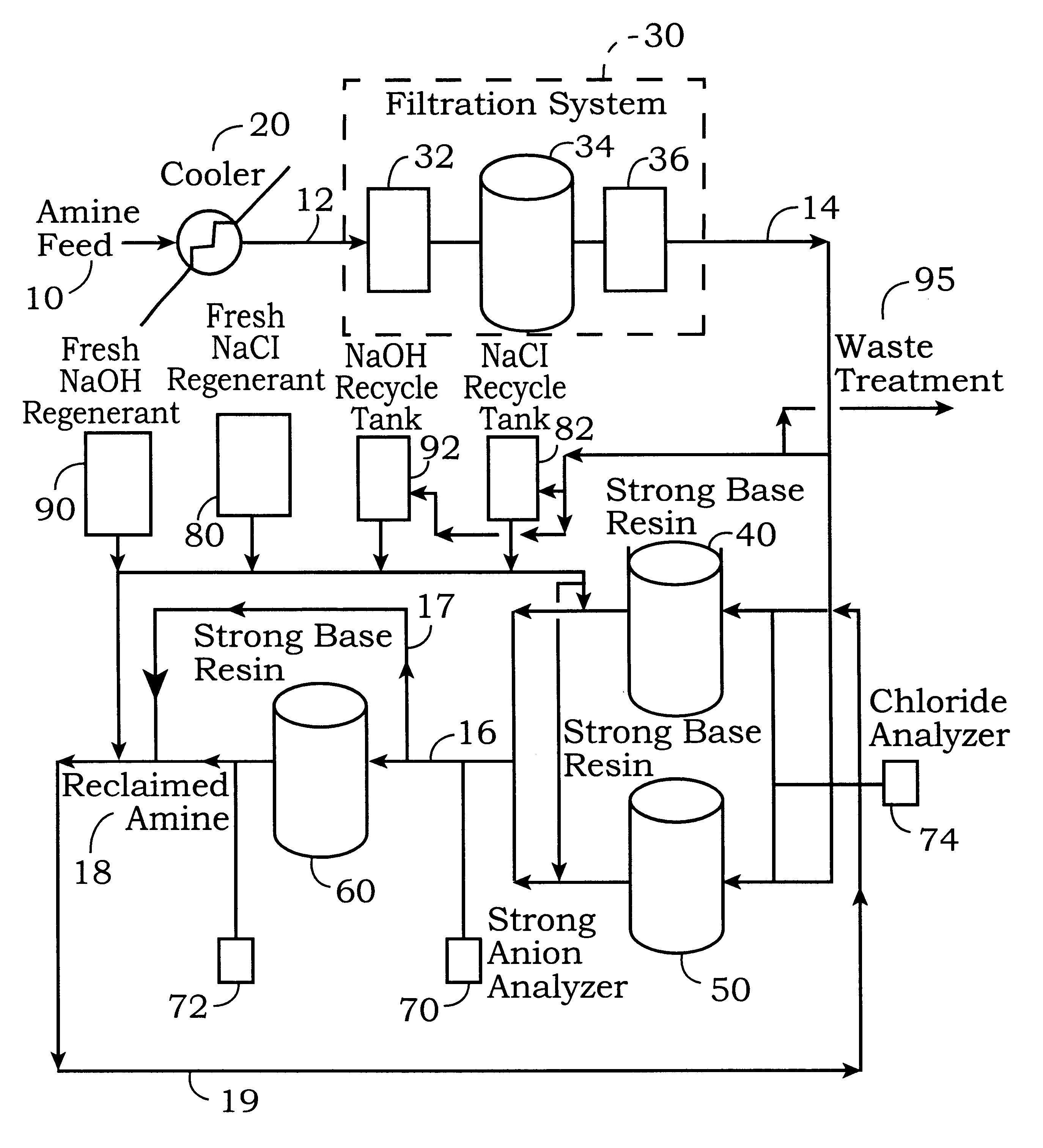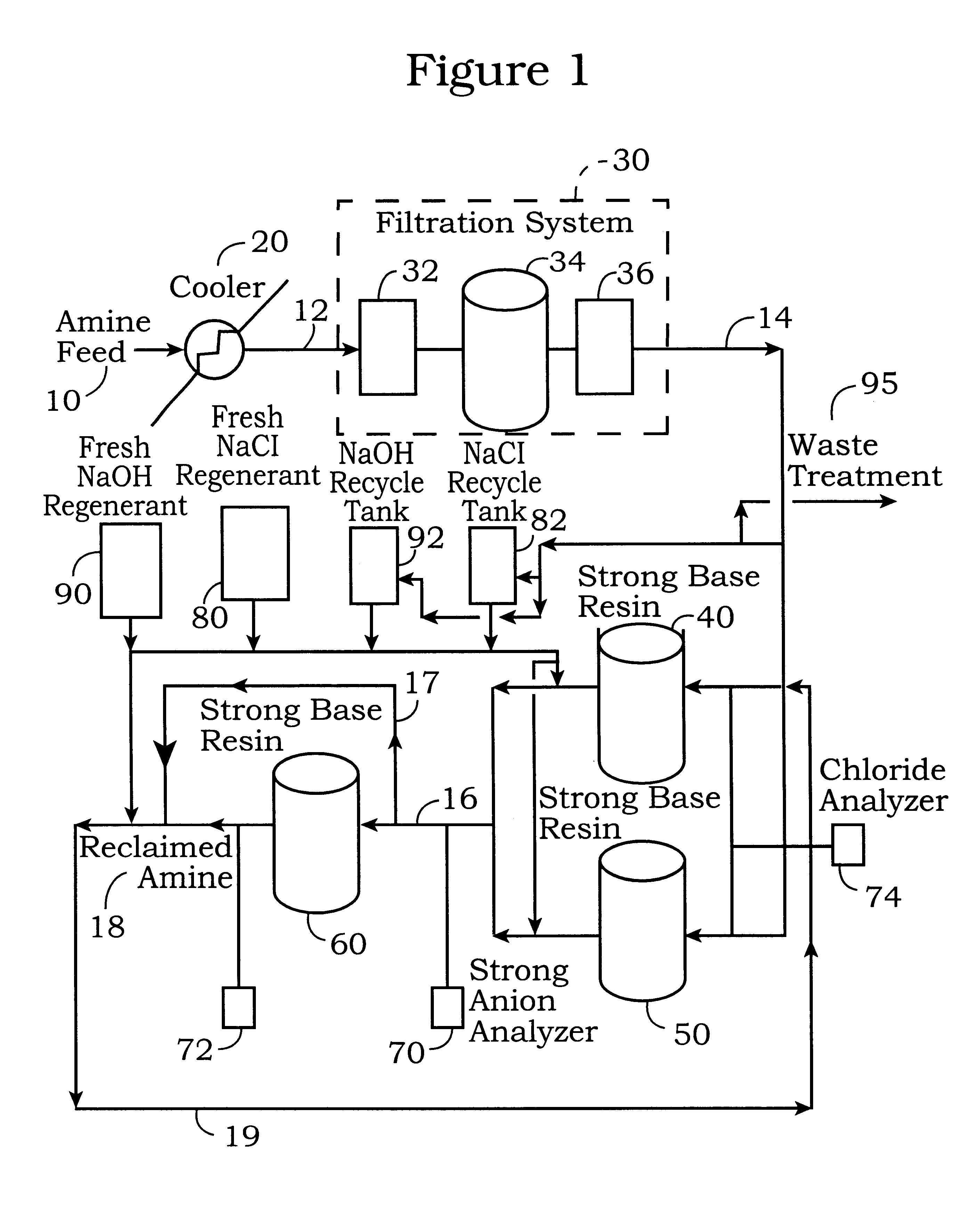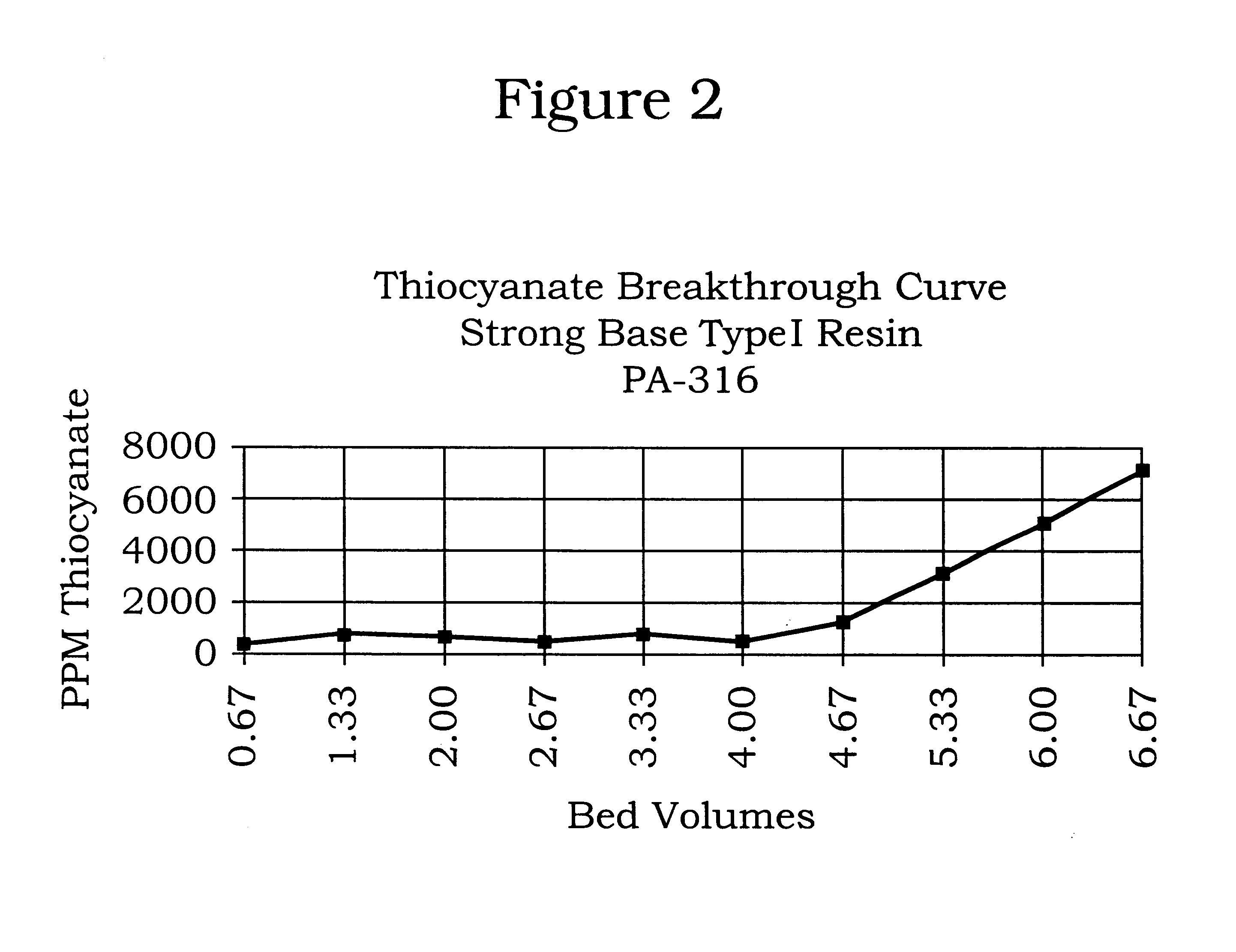Process for the reclamation of spent alkanolamine solution
a technology of alkanolamine and alkanolamine solution, which is applied in the direction of ion exchange water/sewage treatment, liquid degasification, separation process, etc., can solve the problems of inefficient over-cooling, and achieve the effect of reducing the overall efficiency of the system and increasing the potential for anion breakthrough
- Summary
- Abstract
- Description
- Claims
- Application Information
AI Technical Summary
Benefits of technology
Problems solved by technology
Method used
Image
Examples
example 2
Two-Step Regeneration (Stage One)
This example describes the procedure for the regeneration of one of the first stage ion exchange beds 40 and 50 when the second stage ion exchange bed 60 is not regenerated. The regeneration of the first stage ion exchange beds 40 and 50 is more rigorous than the regeneration of the second stage bed 60 because of the high affinity of the stronger anions collected in the first stage beds 40 and 50. The regeneration cycle described in this example can also be used for the second stage ion exchange bed 60. However, using this regeneration cycle for can shorten the resin life and efficiency of the second stage ion exchange resin and should only be used when excessive amounts of strong anions are detected in the second stage resin bed 60 by the strong anion analyzer
In this example, ion exchange bed 40 is in operation and ion exchange bed 50 is in a standby mode. The regeneration cycle for the first stage strong base resin bed 40 is initiated when the stro...
example 3
A pilot plant ion exchange amine reclamation system was constructed and used to test various resin types and regeneration procedures. The unit had the same configuration as the system shown in FIG. 1, except that it did not include a heat exchanger 20 to cool the feed since the temperatures of the alkanolamine solutions tested were below 100.degree. F. Twenty-liter containers were filled with either refinery amine or regenerant solution and used in the experiments. Ion chromatography ("IC") and Visual Spectroscopy Colorimetric ("VSC") tests were performed on samples of the amine and regenerant taken during experimentation. The prominent ions that were detected in the amine system and which form the problematic heat stable salts (HSS) are listed in decreasing affinity: thiocyanate, thiosulfate, formate, and acetate. Removal of these ions is the focus of the process of the present invention.
A Type I strong base resin has a quaternary ammonium as the exchange group that exhibits strong...
example 4
FIGS. 8 and 9 show graphs of the Thiocyanate Breakthrough Curves for the first ten runs of the pilot plant ion exchange amine reclamation system described in Example 3. The graphs show the number of bed volumes of amine solution that are treated in the unit before thiocyanate breakthrough is detected. After each run, the resin bed was regenerated. For the first five runs (FIG. 8), breakthrough does not occur until after about four bed volumes of amine solution is processed. For runs six to ten (FIG. 9), about three bed volumes of DEA are processed before breakthrough is detected. The graphs show that the system is performing well as evidenced by the repetitive curves, which indicate that after the regeneration process the system operates with no significant degradation of the resin.
PUM
| Property | Measurement | Unit |
|---|---|---|
| Volume | aaaaa | aaaaa |
| Volume | aaaaa | aaaaa |
| Volume | aaaaa | aaaaa |
Abstract
Description
Claims
Application Information
 Login to View More
Login to View More - R&D
- Intellectual Property
- Life Sciences
- Materials
- Tech Scout
- Unparalleled Data Quality
- Higher Quality Content
- 60% Fewer Hallucinations
Browse by: Latest US Patents, China's latest patents, Technical Efficacy Thesaurus, Application Domain, Technology Topic, Popular Technical Reports.
© 2025 PatSnap. All rights reserved.Legal|Privacy policy|Modern Slavery Act Transparency Statement|Sitemap|About US| Contact US: help@patsnap.com



